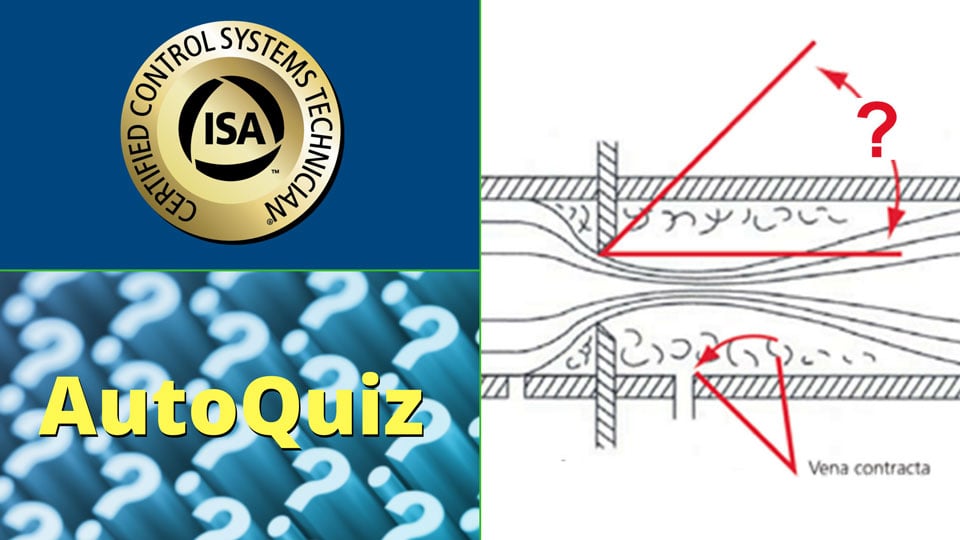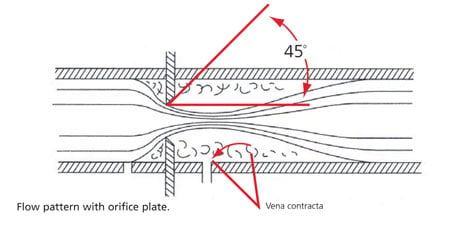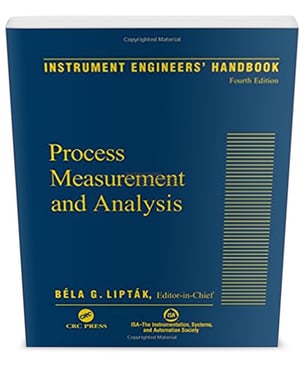AutoQuiz is edited by Joel Don, ISA's community manager.
Today's automation industry quiz question comes from the ISA Certified Control Systems Technician (CCST) program. Certified Control System Technicians calibrate, document, troubleshoot, and repair/replace instrumentation for systems that measure and control level, temperature, pressure, flow, and other process variables. Click this link for information about the CCST program. This question comes from the Level I study guide, Domain 3, Troubleshooting. Level I represents a professional who has a five-year total of education, training, and/or experience.

A beveled orifice should form an angle of::
a) not less than 30 degrees to the axis of the pipe
b) not more than 30 degrees to the axis of the pipe
c) not less than 45 degrees to the axis of the pipe
d) not more than 45 degrees to axis of the pipe
e) none of the above

The orifice plate inserted in the line causes an increase in flow velocity and a corresponding decrease in pressure. The flow pattern shows an effective decrease in the cross section beyond the orifice plate, with a maximum velocity and minimum pressure at the vena contracta.
The vena contracta is that area of the flow stream at its minimum size, where fluid velocity is at its highest level and where fluid pressure is at its lowest level, and it occurs just downstream of the actual physical restriction.
This flow pattern and the sharp leading edge of the orifice plate that produces it are of major importance. The angle of the bevel should not be less than 45 degrees.
The best answer is C.
Reference: Instrument Engineers' Handbook, Fourth Edition, Volume 1: Process Measurement and Analysis
The fourth edition of Instrument Engineers' Handbook incorporates the latest developments in automation and control and broadens its outlook to a global perspective. With a chapter devoted to each major area of measurement technology, the handbook includes topics such as the detection of flow, level, temperature, pressure, density, viscosity, weight, composition, and safety sensors. The book includes contributions from approximately 100 leading industrial and academic professionals. It covers sensors, detectors, analyzers, and other measuring devices introduced since publication of the third edition.





